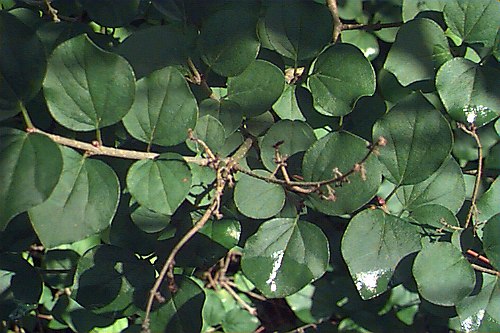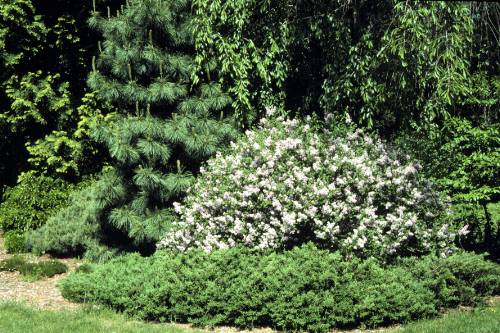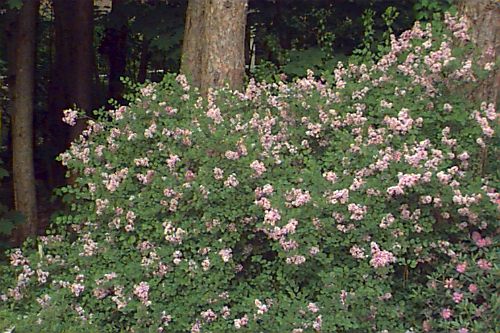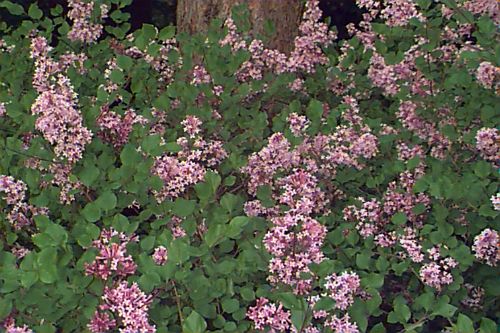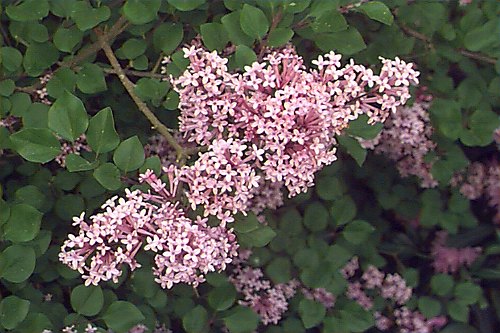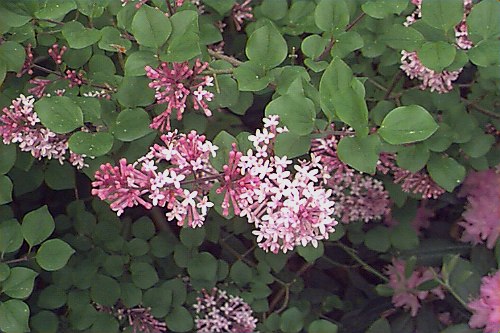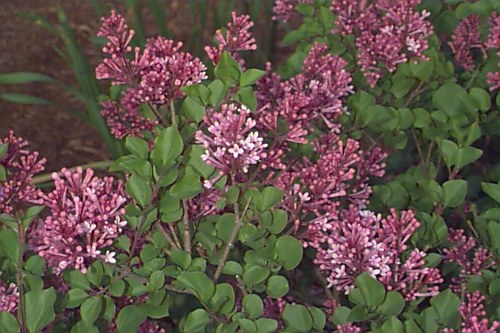Syringa meyeri
Meyer Lilac
Oleaceae
ExpandHabitat
- native to the northern China and northern Japan
- zone 4, probably warmer parts of 3
Habit and Form
- a deciduous shrub
- multistemmed
- rounded, broad shape
- dense and twiggy, but clean and not ratty
- 4' to 8' tall
- 6' to 12' wide
Summer Foliage
- opposite, simple leaves
- elliptic to ovate shape
- 0.75" to 1.75" long
- newly emerged folaige has a reddish rim
- foliage matures to dark green
Autumn Foliage
- no fall color develops
- leaves drop a yellow-green
Flowers
- numerous clusters of small tubular flowers; a heavy bloomer
- flower color is pink to pale purple
- flowers strongly fragrant
- flwer panicles are 4" long by about 2.5" wide
- bloom time is May
- very effective in bloom
- blooms at a very young age
Fruit
- a small capsule
- held in panicles
Bark
- stems are gray-brown
- shoots have prominent lenticels
- not ornamentally important
Culture
- easy to grow
- adaptable
- full sun to light shade
- does not get mildew or other problems that plaque other Syringa sp.
Landscape Use
- probably the nicest of all lilacs
- for bloom
- for fragrance
- useful because of its small size
- foundation plant
- shrub border
- groupings and mass plantings
- specimen
Liabilities
- not many things to knock this plant for
- flower buds emerge early and can get hit by a late frost
ID Features
- small leaves in an opposite arrangement
- dense, fine-twigged shrub
- nultistemmed and wider than tall
- numerous, fragrant pink to pale purple flowers
- shoots with prominent lenticels
Propagation
- by cuttings, but difficult
- by seed
Cultivars/Varieties
'Palibin' (also listed as 'Palibiniana') - The most common form, this unique lilac is very useful for small gardens. The plant forms a compact, rounded mound of dense branches to 5' tall and wider. The small panicles of light pink, fragrant flowers are abundantly presented all along the stems. It is a satisfying plant that remains in scale in contemporary gardens. The plant is often grafted to a standard to form a somewhat awkward small tree.
'Bailbelle' (Tinkerbelle™) - This new introduction is a hybrid selection that assumes an upright-rounded habit to 6' tall and wide. The deep wine-red flowers are unusual for a lilac, plus they contrast with the pinkish buds and offer an excellent fragrance.
